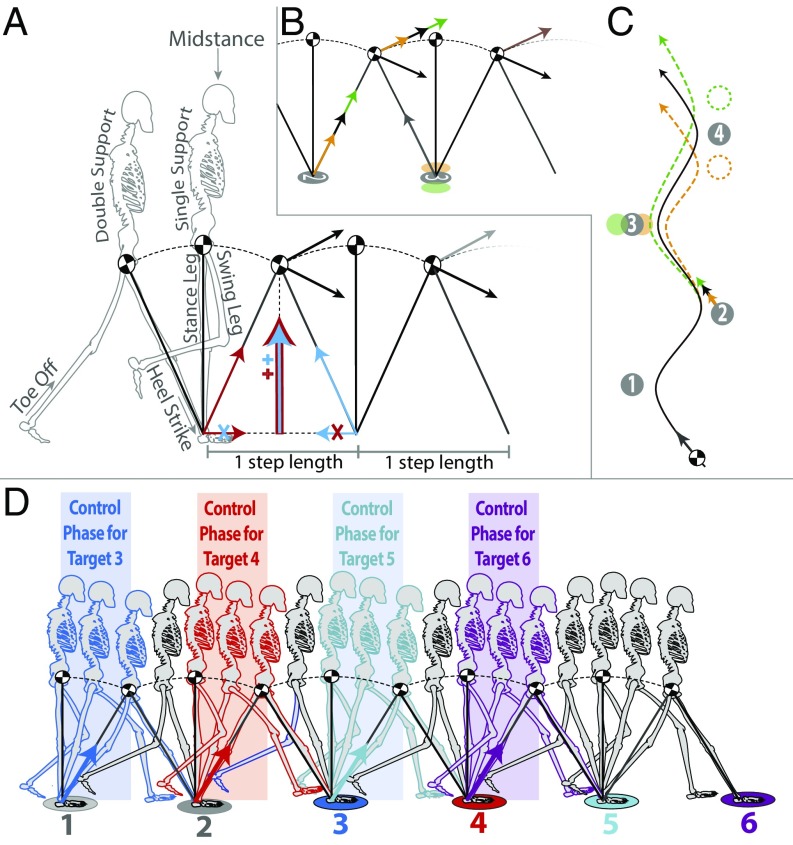Fig. 1.
(A) A conceptual diagram of the steady-state gait cycle. In the step-to-step transition, positive and negative work from the trailing and leading legs (red and blue arrows, respectively) redirect the COM and establish the conditions leading into the next step. (B) The ballistic trajectory of the COM during a step is defined by two factors—the location of the planted foot and the magnitude of the push-off force from the trailing limb. (C) By adjusting these factors, a walker can tailor the passive trajectory of the COM in an oncoming step to facilitate a step onto a target foothold. (D) The critical control phase for targets 3–6 (see also Movie S1).

